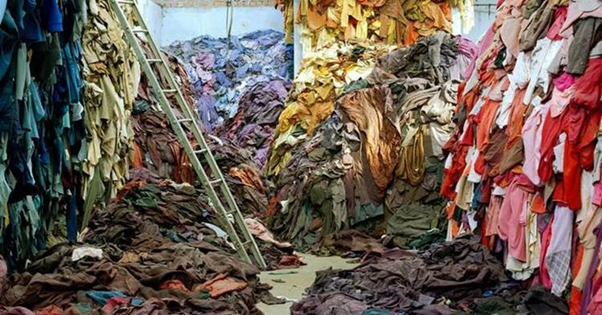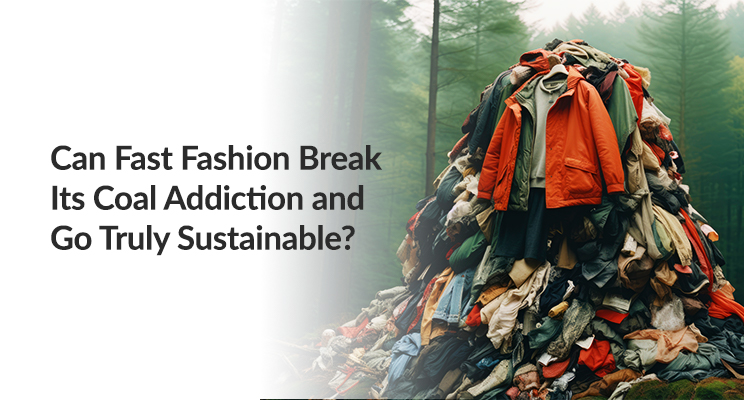Fast fashion brands have long faced criticism for their environmental impact, from excessive waste to carbon-heavy supply chains. In recent years, some of the industry’s biggest names have pledged to phase out coal from their factories by 2025. But as the deadline approaches, the question remains: Are these brands truly committed, or is this just another greenwashing tactic?

Coal remains a dominant energy source in textile production, particularly in China, Bangladesh, India, and Vietnam—some of the largest garment manufacturing hubs. Despite corporate promises, many factories still run on coal-fired power plants, making it one of the dirtiest sectors contributing to climate change.
The Fast Fashion Industry’s Carbon Problem
Fast fashion is built on speed, affordability, and mass production, but this comes at a high environmental cost. The fashion industry is responsible for up to 10% of global carbon emissions, and a significant portion of that comes from its reliance on coal-powered energy.
Textile Production
Most emissions come from energy-intensive processes like spinning, dyeing, and finishing, which often rely on fossil fuels. Polyester, the most commonly used textile, is derived from petroleum and produces nearly three times the CO₂ emissions of cotton.
Manufacturing hubs depend on coal
Countries like China, Bangladesh, and Vietnam still use coal as their primary energy source.
Cost efficiency over sustainability
Many factories prioritize low-cost production, making renewable energy investments unattractive.
Lack of strict regulations
Governments in coal-reliant nations have few mandates for cleaner energy in textile manufacturing.
According to the Global Fashion Agenda, without immediate intervention, fashion’s emissions will continue rising beyond 2030, missing crucial climate goals (GFA).
Greenwashing or Genuine Progress?
Many fast fashion brands use greenwashing tactics to appear more sustainable than they are. Greenwashing refers to misleading marketing that exaggerates a company’s commitment to sustainability.
How Greenwashing is Hiding the Coal Problem
- Selective reporting: Brands highlight renewable energy use in corporate offices, but fail to disclose coal use in supplier factories.
- Carbon offset distractions: Some brands invest in carbon offset programs (like tree planting) instead of phasing out coal directly.
- Misleading sustainability claims: Many companies claim to be “carbon neutral” while still using coal for manufacturing.
A recent Stand Earth report revealed that many fashion giants still source over 50% of their energy from coal, despite public sustainability promises.
The Barriers to a Coal-Free Fast Fashion Industry
While eliminating coal in fashion sounds achievable, the industry faces several obstacles that slow down progress.
Key Challenges
- Cost of renewable energy – Many factories lack the infrastructure or financial support to switch from coal to solar or wind power.
- Pressure from suppliers – Small manufacturers in coal-heavy countries struggle to transition without financial incentives.
- Lack of government intervention – Without strict policies, brands have no real urgency to eliminate coal from their supply chains.
Without proper enforcement and industry-wide collaboration, fast fashion risks missing its 2025 goals, making the transition even harder in the long run.
What Needs to Happen Next?
If fast fashion brands are serious about eliminating coal, they need to take bold and transparent actions beyond just marketing claims.
Steps Towards a Truly Coal-Free Future
- Full supply chain transparency – Brands must disclose factory energy sources, not just corporate office emissions.
- Investing in renewable energy partnerships – Major brands should finance clean energy projects for their suppliers.
- Stronger industry regulations – Governments and organizations must enforce coal phase-out policies with penalties for non-compliance.
- Consumer pressure & accountability – Shoppers can support verified sustainable brands and demand better transparency.
As we move further into 2025, the clock is ticking for fast fashion’s coal-free commitments. While some brands are making progress, many continue to rely on greenwashing to distract from their coal-powered supply chains.
The real question is: Will fast fashion truly cut coal out of its production cycle, or will these promises remain just another marketing strategy?
As consumers, we hold the power to demand real accountability—because a truly sustainable fashion industry means more than just words; it requires action.


